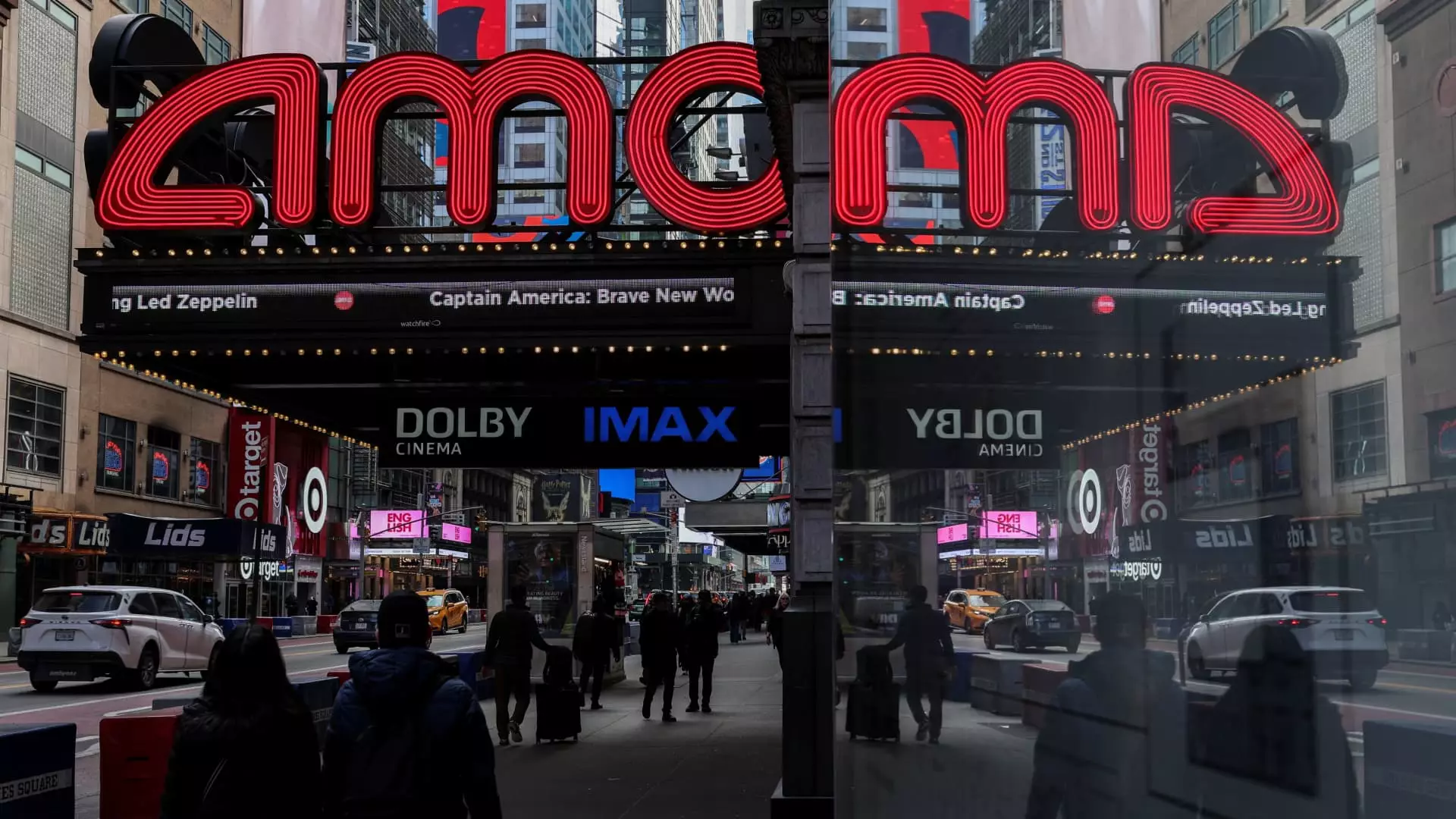In a landscape where cinematic experience increasingly weighs heavily on technological advancements, AMC Entertainment’s recent decision to expand its number of premium screens reflects a significant shift in consumer preferences. The world’s largest cinema chain plans to add an impressive 40 Dolby Cinema theaters across the United States by 2027, marking a 25% increase in its premium offerings. This announcement highlights not only the growing demand for elevated viewing experiences but also the necessity for AMC to stay competitive in an industry that has suffered significantly due to digital distractions and changing viewing habits.
This strategic move is not merely about expanding the number of screens; it signifies AMC’s commitment to providing more immersive experiences that traditional theaters often struggle to deliver. While some may view this as an immediate profit-driven decision, it can be interpreted as a long-term investment in revitalizing the cinema-going culture, which has been disrupted by the convenience of streaming services. By creating a more premium experience, AMC hopes to rekindle that magical allure of watching films in a communal environment, surrounded by passionate cinephiles.
The Allure of Premium Large Formats
Let’s delve into what makes premium large format screens (PLFs) so appealing. Sizes dwarfing traditional screens, coupled with advanced sound systems and luxurious seating, elevate the average movie experience to something transcendent. Dolby Cinemas boast plush reclining chairs, impressive visual technology, and state-of-the-art sound through Dolby Atmos, immersing audiences in a way that basic cinema cannot. The aesthetic of luxury—complete with gourmet concessions—furthers the notion that modern movie-going is as much about atmosphere as it is about the film itself.
The fact that PLF formats are now responsible for a notable chunk of box office revenues—their share has increased to approximately 9.1% and growing—indicates that audiences are willing to pay a premium for enhanced experiences. Films that thrive within these formats, such as “Oppenheimer” and “Avatar: The Way of Water,” are clear markers that high-quality cinematic experiences are not just a trend but a fundamental shift in the industry’s model.
However, this development raises several questions. Is this burgeoning trend sustainable, or will it dissolve into just another gimmick aimed at squeezing every last dime from moviegoers? Increased ticket prices, which have risen roughly 8% since 2021 to just under $17 for a premium experience, might intimidate some audiences. The cinema is no longer an inexpensive night out, but rather a costly venture reserved for special occasions. This shift could alienate a significant portion of the audience that seeks more accessible entertainment options.
The Implications for the Future of Film
While AMC’s expansion into PLFs could be a step towards a more vibrant cinematic future, it shouldn’t overshadow the essential discourse around inclusivity and accessibility in film. The burgeoning divide between high-end theaters and traditional venues raises concerns about what community film-going will look like moving forward. With the growth of PLFs—over 950 in North America as of 2024—a certain elitism might begin to creep into the fabric of cinema, where only those who can afford premium prices will experience the artistry that films have to offer.
Moreover, a reliance on blockbuster franchises to populate these premium formats brings forth another critical perspective. The current film landscape, dominated by sequels and CGI marvels, risks sacrificing creative storytelling for fiscal safety nets. By constructing theaters that are optimized for already established blockbusters, the industry may inadvertently stifle innovation and originality. Filmmakers might feel pressured to conform to the expectations set forth by these high-end formats, consequently diluting the diversity of narratives that cinema should champion.
In this precarious balancing act between commercial viability and artistic integrity, we find ourselves at a crossroads. The allure of the premium experience sits at odds with the necessity for a diverse and inclusive film landscape that supports independent and international cinema. Ultimately, the true measure of success in this booming trend will not just be reflected in the revenue accrued from ticket sales but also in how well it enriches and diversifies the overall cinematic experience for future audiences.

